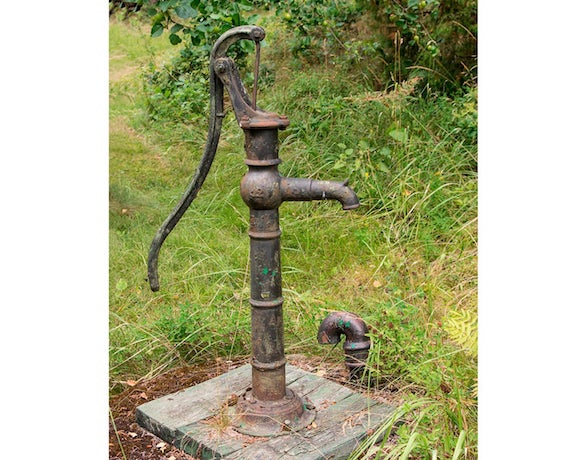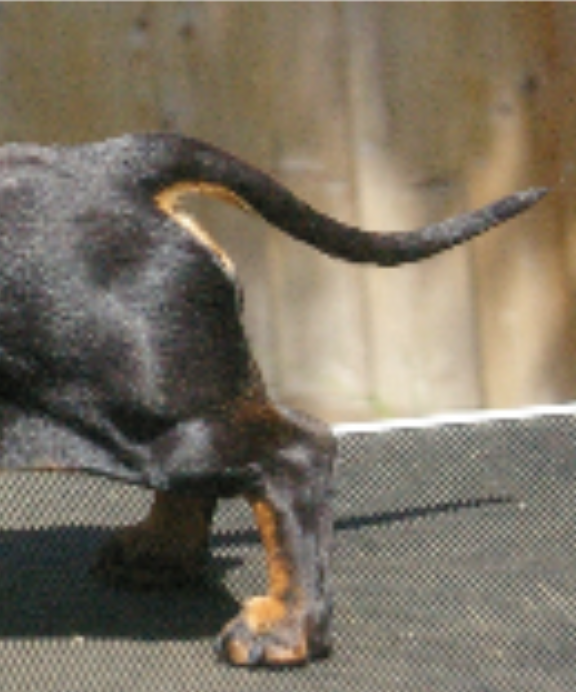
When certain terms don’t show up in a breed standard, it shouldn’t be construed that what the terms describe are less of a fault or more of a positive attribute. Knowing one’s breed standard is important, but we confess that in the dog fancy, sometimes there are just some things one is supposed to know without it being written out. Novices to the show ring and breeding soon learn to: 1) Start reading up on structure, and 2) infer that any deviation from their breed’s standard is probably undesirable, a fault, or even disqualification. To wit: A “fiddle front” doesn’t appear in the Puli standard, but Puli fanciers know it’s a fault in their breed.
Enter the “pump handle” tail. Sometimes called a “crank tail,” it is defined as being a tail that is long and carried high, but it’s considered undesirable in many breeds, including the Dachshund. The Dachshund standard, however, doesn’t mention it. What it does do is specifically describe the breed’s tail as “set in continuation of the spine, extending without kinks, twists, or pronounced curvature, and not carried too gaily.” Again, a deviation from that description is undesirable.

Image found on Pinterest and happily credited upon receipt of information
On the subject of pump handle tails, there are a few breeds in which it not only shows up in the standards of those breeds, but is considered acceptable if not preferable. From the AKC’s SBT breed standard: The Staffordshire Bull Terrier’s tail is “of medium length, low set, tapering to a point and carried rather low. It should not curl much and may be likened to an old-fashioned pump handle.”
From the United Kennel Club’s breed standard: “The American Bulldog may have a natural or a docked tail, but the natural tail is preferred. The natural tail is very thick at the base, set low, and tapers to a point. It should reach to the hock joint. A “pump handle” tail is preferred, but any tail carriage from upright, when the dog is excited, to relaxed between the hocks is acceptable.”
And finally, the Olde English Bulldogge standard with the United Kennel Club: “A full tail is preferred. The characteristic tail is often referred to as a crank or pump handle tail.”
Know your standard!
Image: This photo of an old water pump is by and is available for purchase on her website here.
